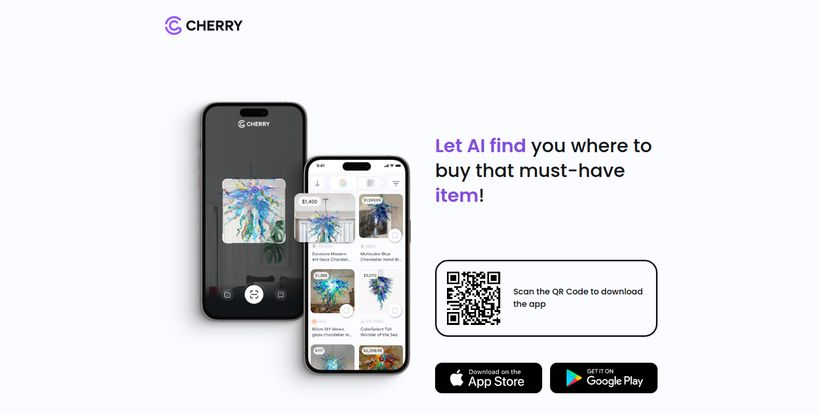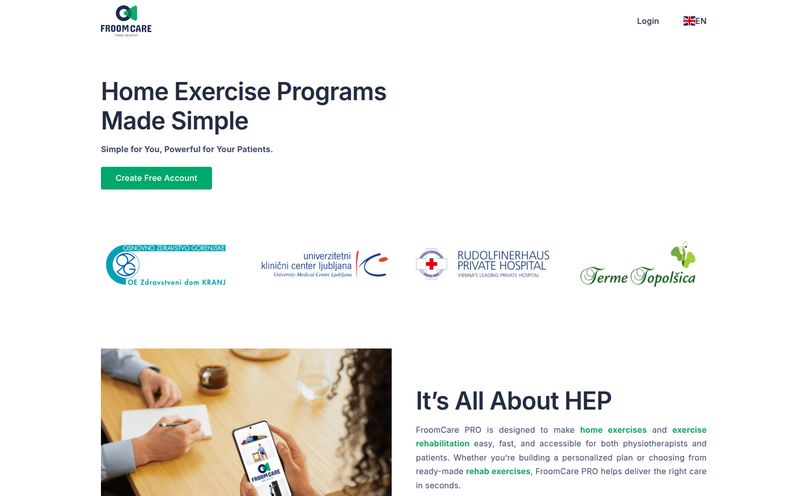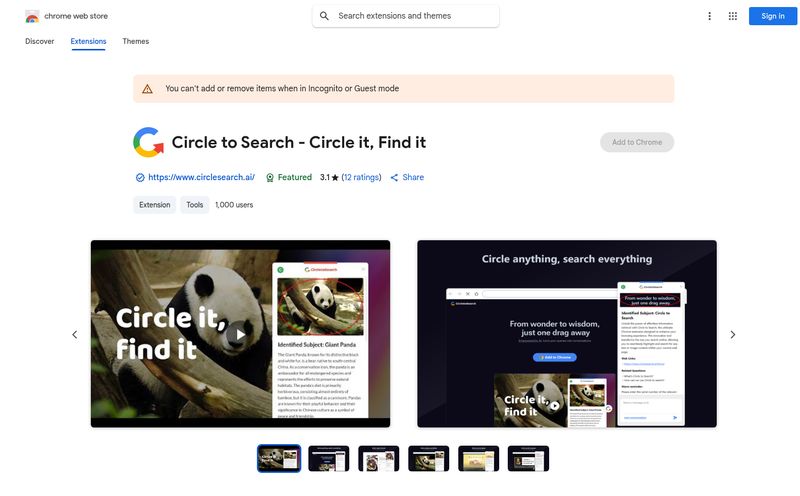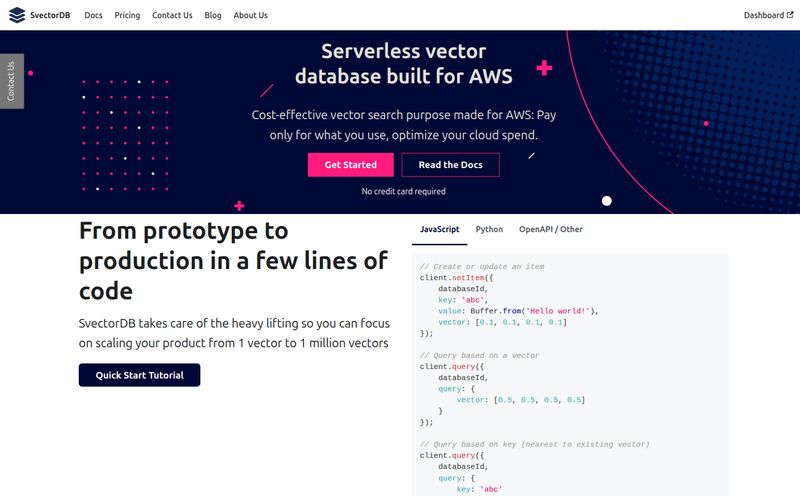We’ve all been there. You’re scrolling through Instagram, minding your own business, when you see it. The perfect thing. It could be a weirdly shaped lamp in the background of a celebrity’s photo, the sneakers on a stranger walking down the street, or a ridiculously cool chair in a cafe you’ll probably never visit again. The desire is immediate. It’s primal. You need it.
But then comes the crushing reality. How do you even begin to search for it? You type “funky blue glass chandelier with spiky bits” into Google and get... well, you get a mess. It’s a modern-day shopping nightmare. For years, I’ve been saying we need a Shazam, but for stuff. An app that can just look at an item and tell you where to buy it.
Well, folks, it looks like someone was listening. I stumbled upon an app called Cherry, and my inner impulse-shopper is both terrified and thrilled. The premise is so simple it’s brilliant: Let AI find you where to buy that must-have item. And I have to say, after playing around with it, I'm genuinely intrigued.
So, What is This Cherry App Anyway?
Think of Cherry as a magic mirror for shopping. You show it an object, either through your phone’s camera or by uploading an image, and it scours the internet to find that exact product or a whole bunch of things that are strikingly similar. It completely short-circuits that frustrating, dead-end search process. No more fumbling with awkward keywords. Just point, shoot, and shop.
It’s built on AI-powered visual search, which isn’t brand new tech—Google Lens and Pinterest have been doing it for a while. But Cherry’s angle is different. It’s not trying to be an encyclopedia for the visual world; its mission is pure, unadulterated commerce. It’s designed from the ground up for one thing: to get that product into your shopping cart as fast as humanly (or artificially) possible.
My First Spin with Cherry: A Real-World Test
To give it a proper go, I decided to test it on something a little tricky. I used the very chandelier featured in their own ads—that wild, blue, spiky glass creation. It’s distinctive, for sure, but also artistic. Not exactly a mass-market IKEA piece. I pulled up a picture of it and let Cherry do its thing.

Visit AI Shopping Tool
And… wow. It was fast. Incredibly fast. Within seconds, my screen was filled with options. It didn't just find one; it found several variations from different retailers, at different price points. Some were exact matches, others were close cousins that captured the same chaotic-cool vibe. The experience was smooth, the interface was clean, and the results were, frankly, impressive. It felt a little bit like magic.
The Good, The Bad, and The AI
No tool is perfect, especially one relying on something as tricky as artificial intelligence. After the initial honeymoon phase, I started poking at the edges to see where it excelled and where it, well, didn't.
The Wins: Why I'm Genuinely Impressed
The biggest win here is the speed and the sheer satisfaction. Cherry delivers on its promise of instant gratification. The friction between seeing something and being able to buy it is almost completely gone. This is both amazing and dangerous for my wallet. The user experience is dead simple, too. There's no learning curve. If you can take a photo, you can use this app. It’s a fantastic tool for finding dupes or just getting a better price on an item you've already found elsewhere. That sofa you saw in a high-end store for a wild price? Snap a pic. You might be surprised to find a lookalike for a fraction of the cost.
Where It Stumbles a Bit
Now for the reality check. The AI is good, but it’s not a mind reader. The accuracy is heavily dependent on the quality of your image. A clear, well-lit photo of a product against a simple background? You'll get great results. A blurry, long-distance shot of a coat in a crowded room? Yeah, not so much. I tried it on a few obscure vintage items and it struggled, which is to be expected. If there's only one of it in the world, the AI isn't going to find an online store link for it. You're putting your faith in the algorithm, and sometimes it's going to get it wrong. It's a tool, not an oracle.
Who Is This App Actually For?
I can see a few groups of people becoming absolutely obsessed with Cherry. First up, interior design lovers and home decor junkies. Being able to instantly source furniture and decor from inspiration pics is a game-changer. Second, the fashion-forward crowd. Street style inspiration can finally become shoppable in real-time. I also think it’s a killer tool for anyone who spends a lot of time on Pinterest or Instagram, creating mood boards of things they wish they could own. Now, they pretty much can.
Cherry vs. The Competition
Some might say, “But I already have Google Lens!” And you’re not wrong. Google Lens is powerful, but it’s also trying to do a million other things—identify plants, translate text, solve math problems. Using it for shopping can feel a bit clunky. My experience is that dedicated tools almost always do their one job better than a swiss-army-knife feature baked into a larger ecosystem. Cherry’s singular focus on shopping makes for a more streamlined and, in my opinion, more enjoyable experience. It’s all signal and no noise.
Let's Talk Money: The Price of Instant Gratification
So how much does this magic shopping wand cost? As far as I can tell, it’s free. I downloaded it from the App Store without paying a dime, and there are no immediate signs of a subscription model. This is pretty standard for apps like this. They most likely make their money through affiliate partnerships with retailers. When you click a link and buy a product, Cherry gets a small commission from the seller. The best part? It doesn’t cost you anything extra. It's a smart business model that keeps the tool accessible for everyone.
Conclusion: Is Cherry the Future of Impulse Buying?
I started out skeptical, but Cherry won me over. It’s a slick, effective, and genuinely useful tool that solves a very real problem for anyone who loves to shop or find inspiration online. It’s not perfect, and it won’t find every single item on the planet, but for mainstream and even semi-niche products, it works shockingly well.
It represents a shift in how we interact with e-commerce, making the world around us one giant, shoppable catalog. So yes, my brain still has too many tabs open. But now, at least one of those tabs can be closed because I’ve finally found that chair. Give it a download; just don’t blame me when your credit card bill arrives.
Frequently Asked Questions (FAQ)
- How does the Cherry app work?
- Cherry uses AI-powered visual search. You take a picture or upload an image of an item, and the app's AI analyzes it and searches online retailers to find the exact product or visually similar alternatives for you to purchase.
- Is the Cherry app free to use?
- Yes, the Cherry app is currently free to download and use on both iOS and Android. It likely earns revenue through affiliate commissions from retailers at no extra cost to the user.
- How accurate is Cherry's AI product recognition?
- Its accuracy is generally very good, especially for popular products in fashion and home decor. However, performance depends heavily on the quality of your photo. Clear, well-lit images yield the best results. It may struggle with very obscure, unique, or poorly photographed items.
- Can I use old photos from my phone's gallery with Cherry?
- Absolutely. Besides using your live camera, you can upload any image from your photo library, like screenshots from social media or pictures you took weeks ago.
- What is the main difference between Cherry and Google Lens?
- While both use visual search, Google Lens is a multi-purpose tool for identifying all sorts of things (plants, text, landmarks). Cherry is specifically focused on one task: shopping. This makes its user experience much more streamlined and direct for finding and buying products.
- Where can I download the Cherry app?
- The Cherry app is available for download on both the Apple App Store for iOS devices and the Google Play Store for Android devices.



